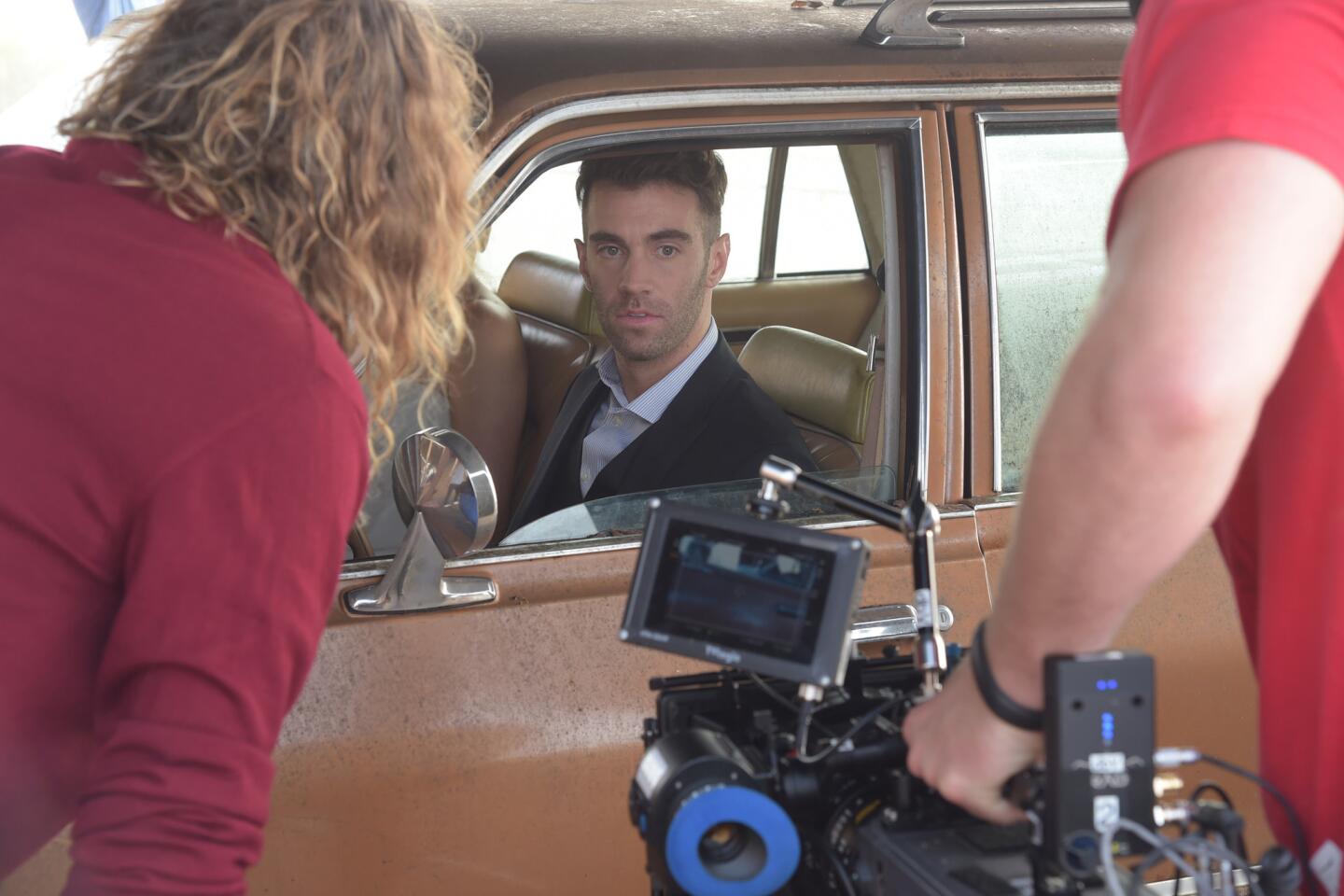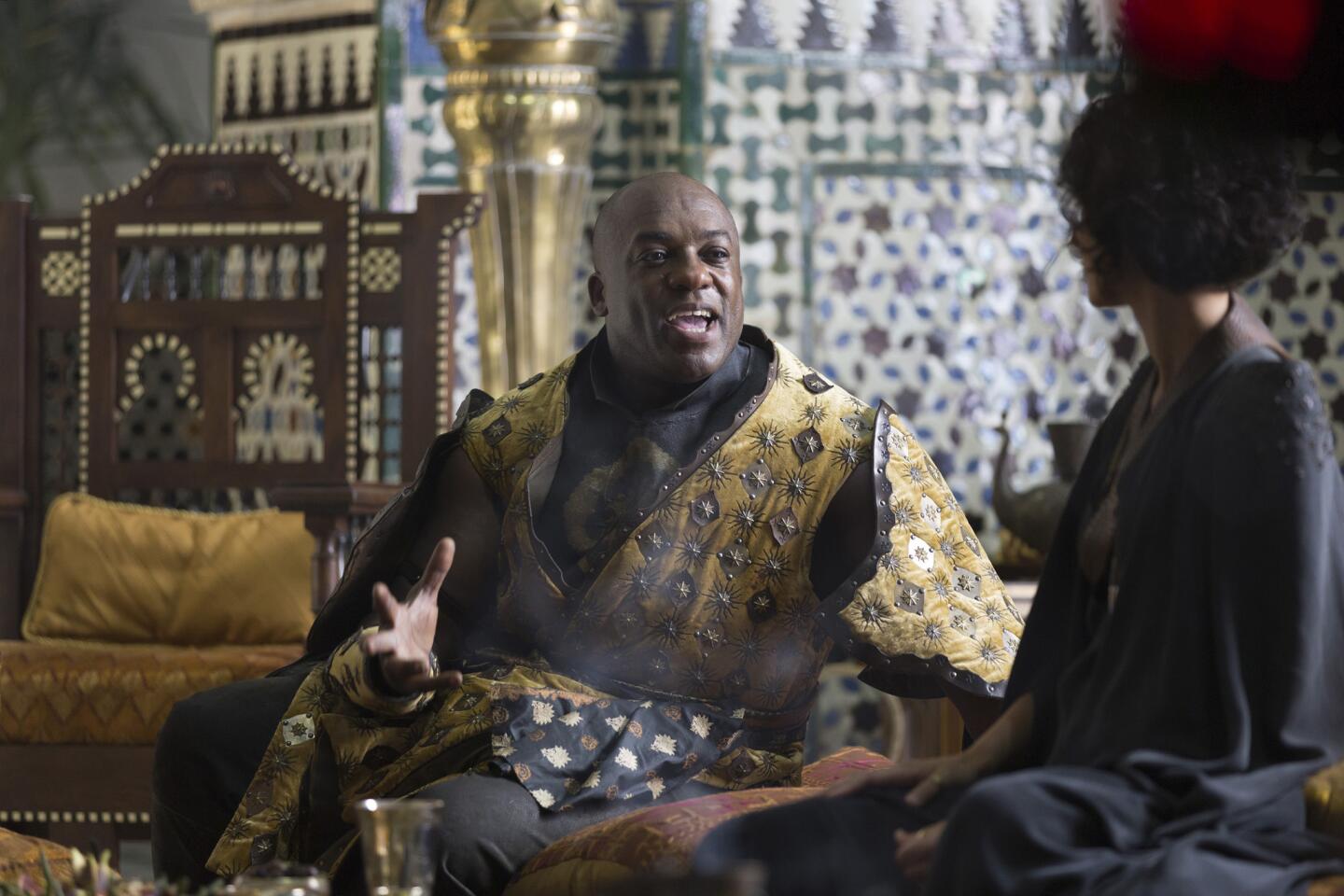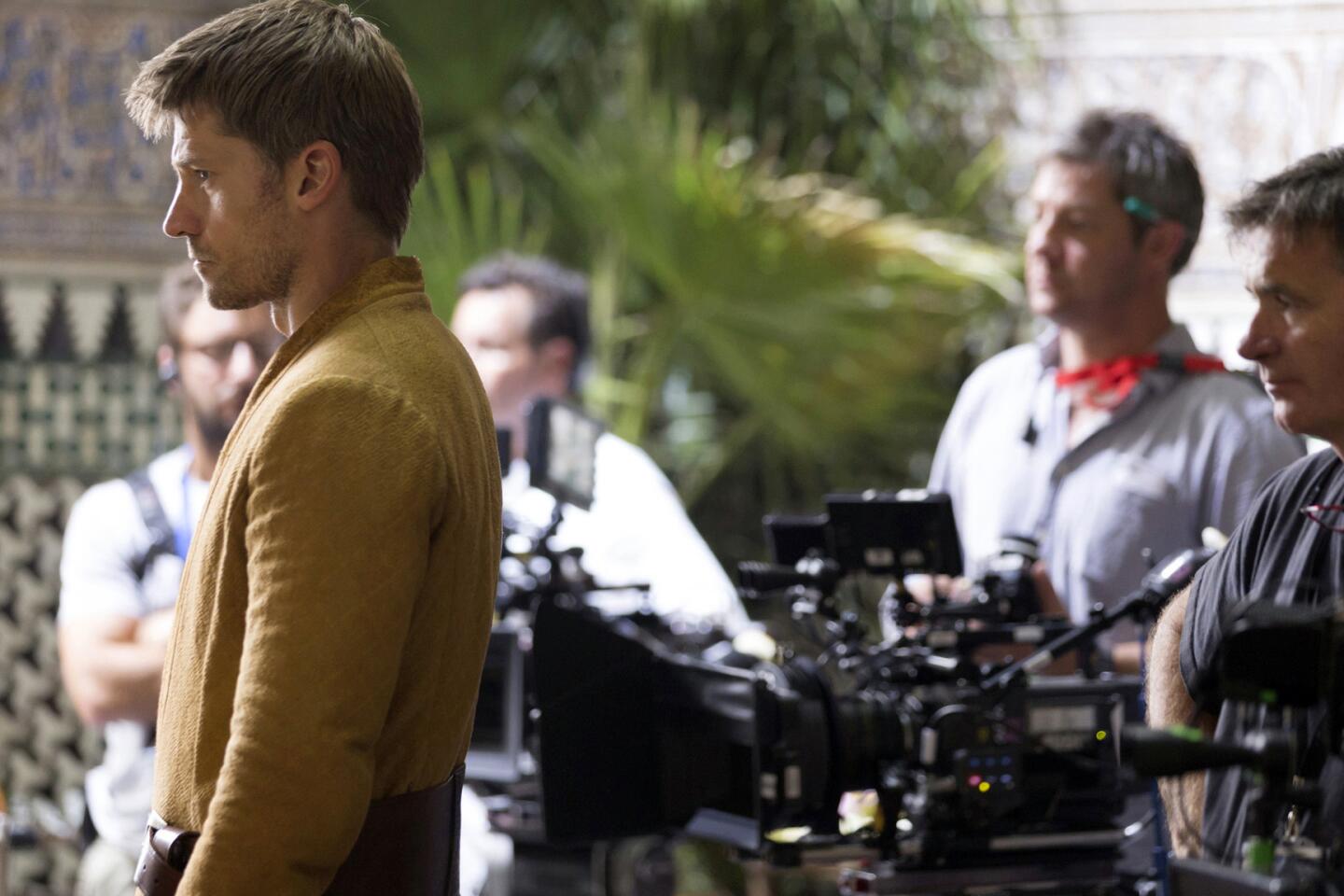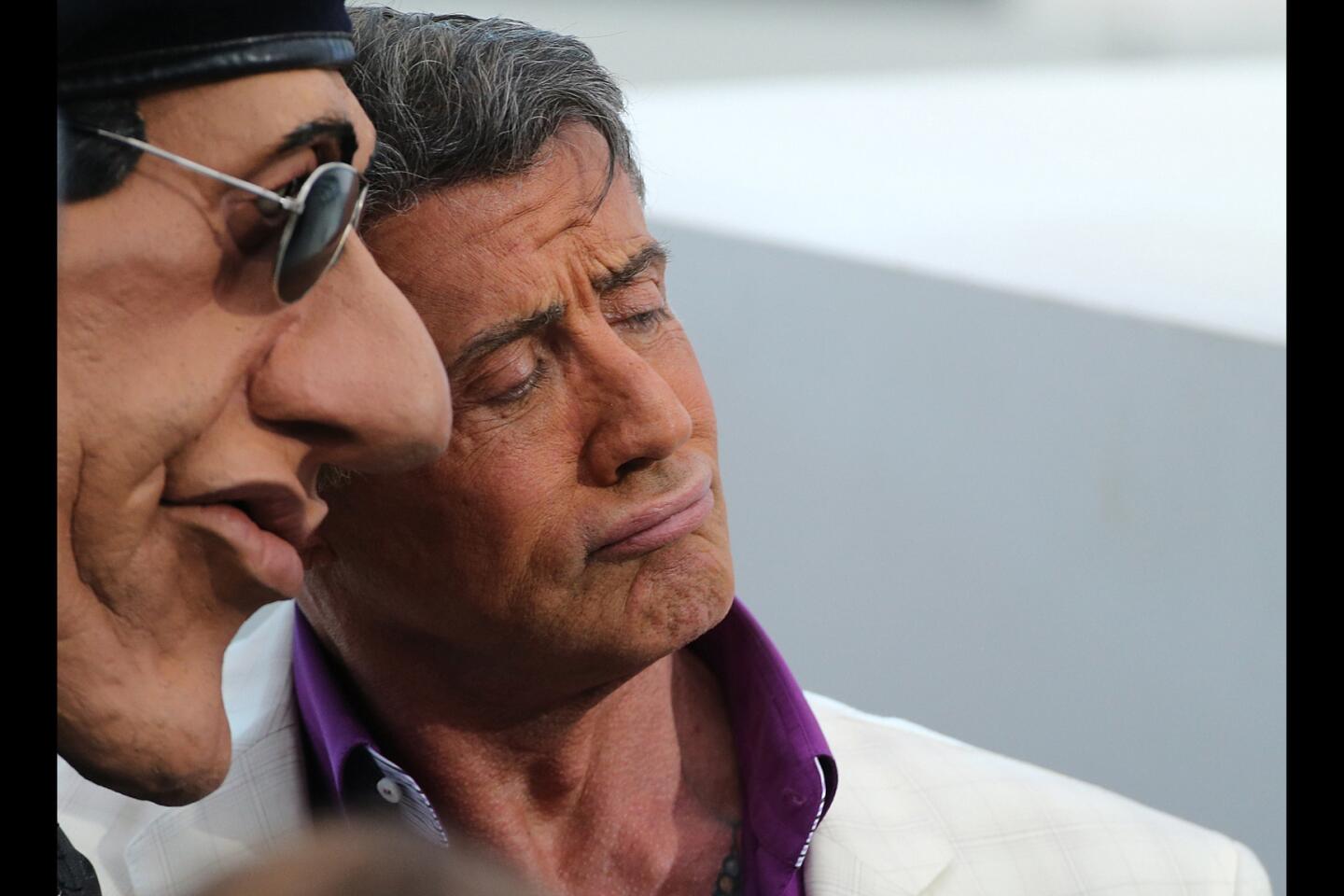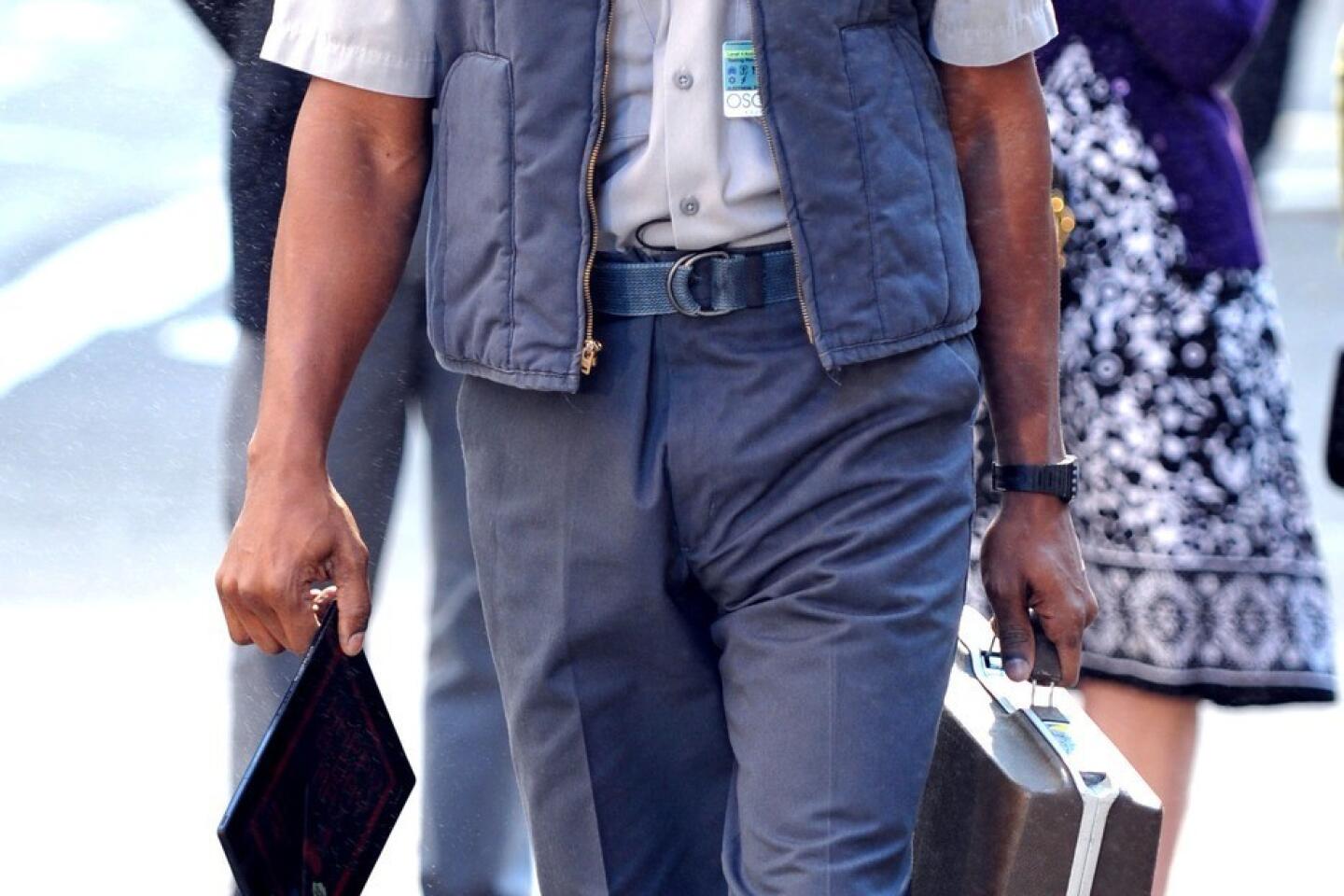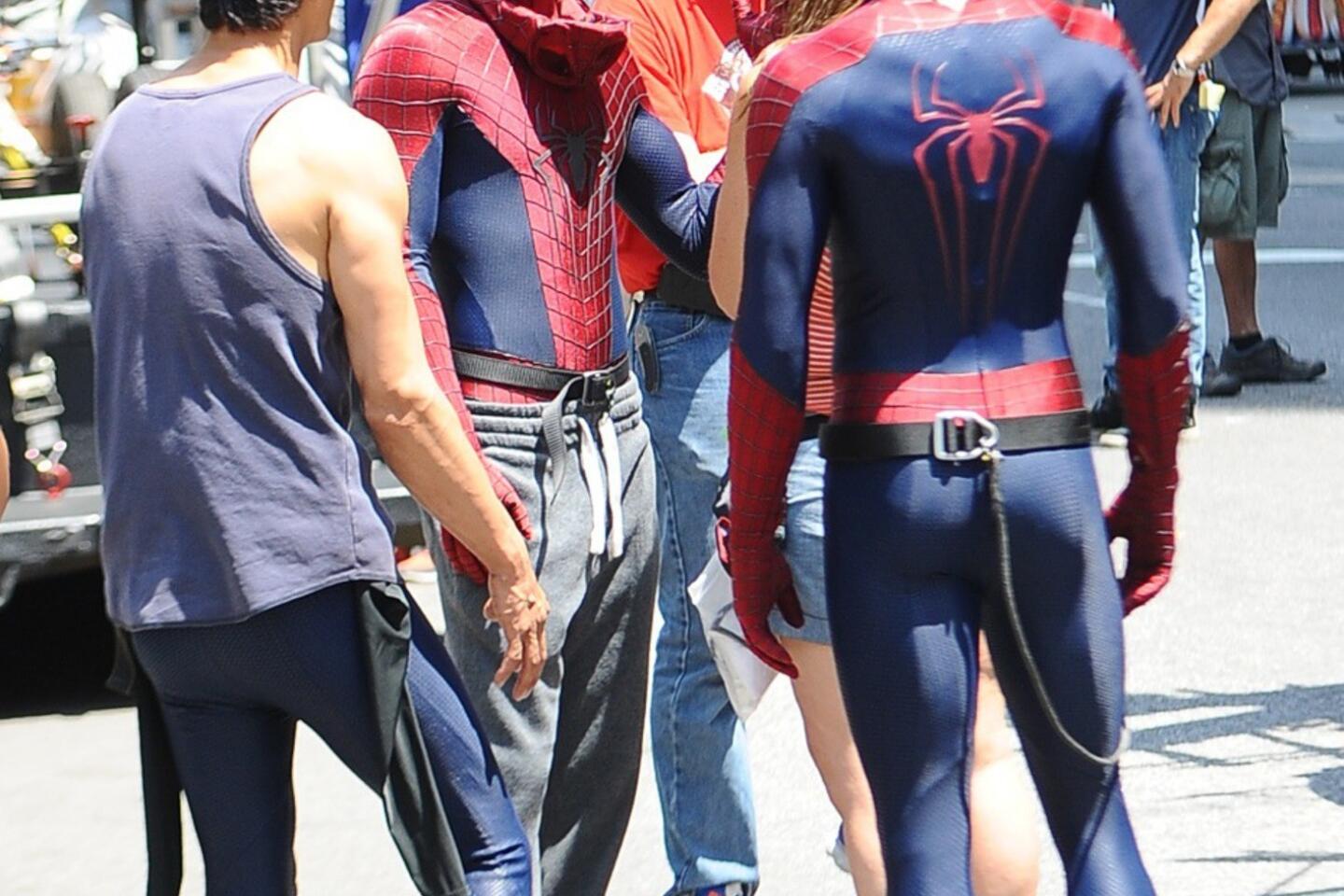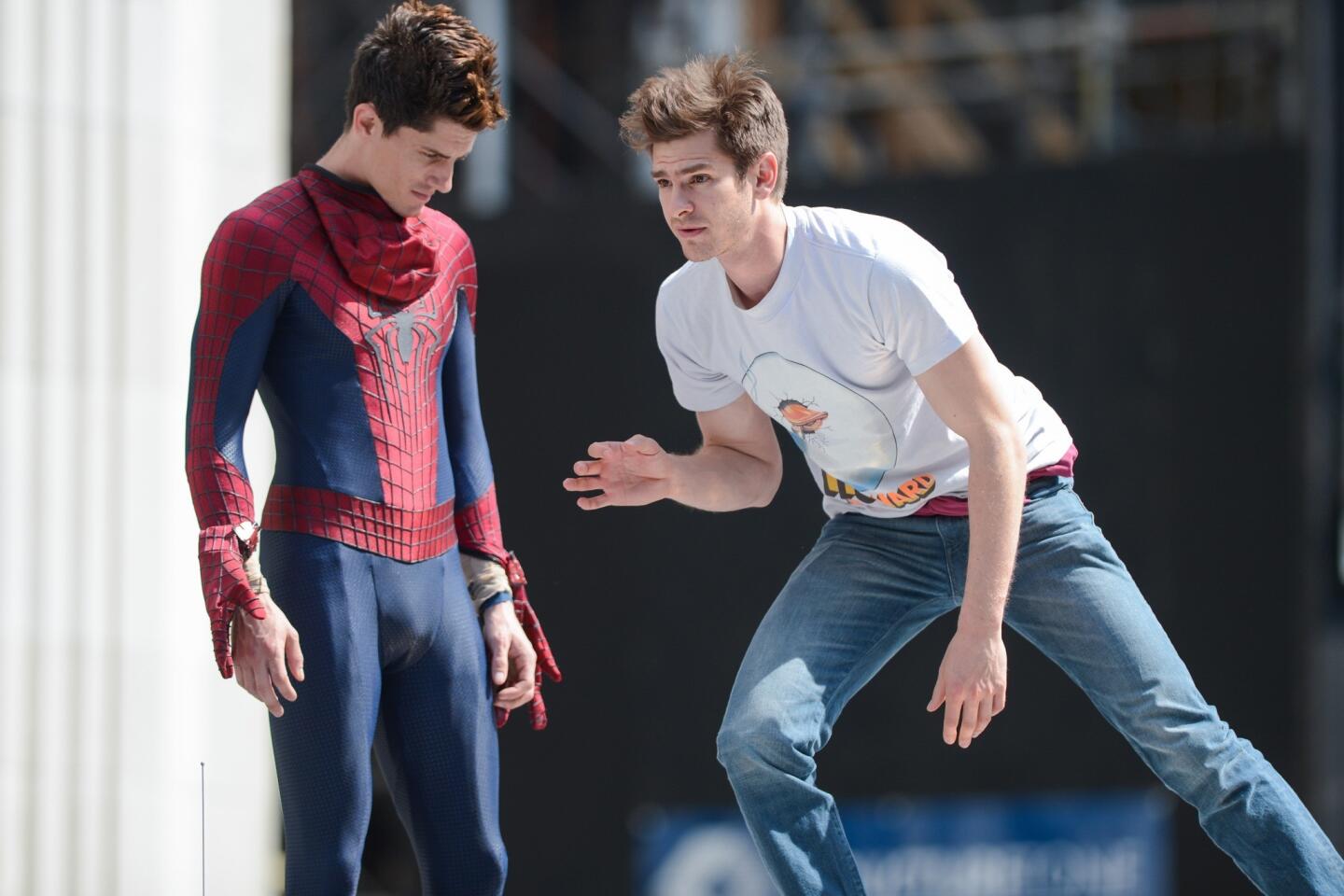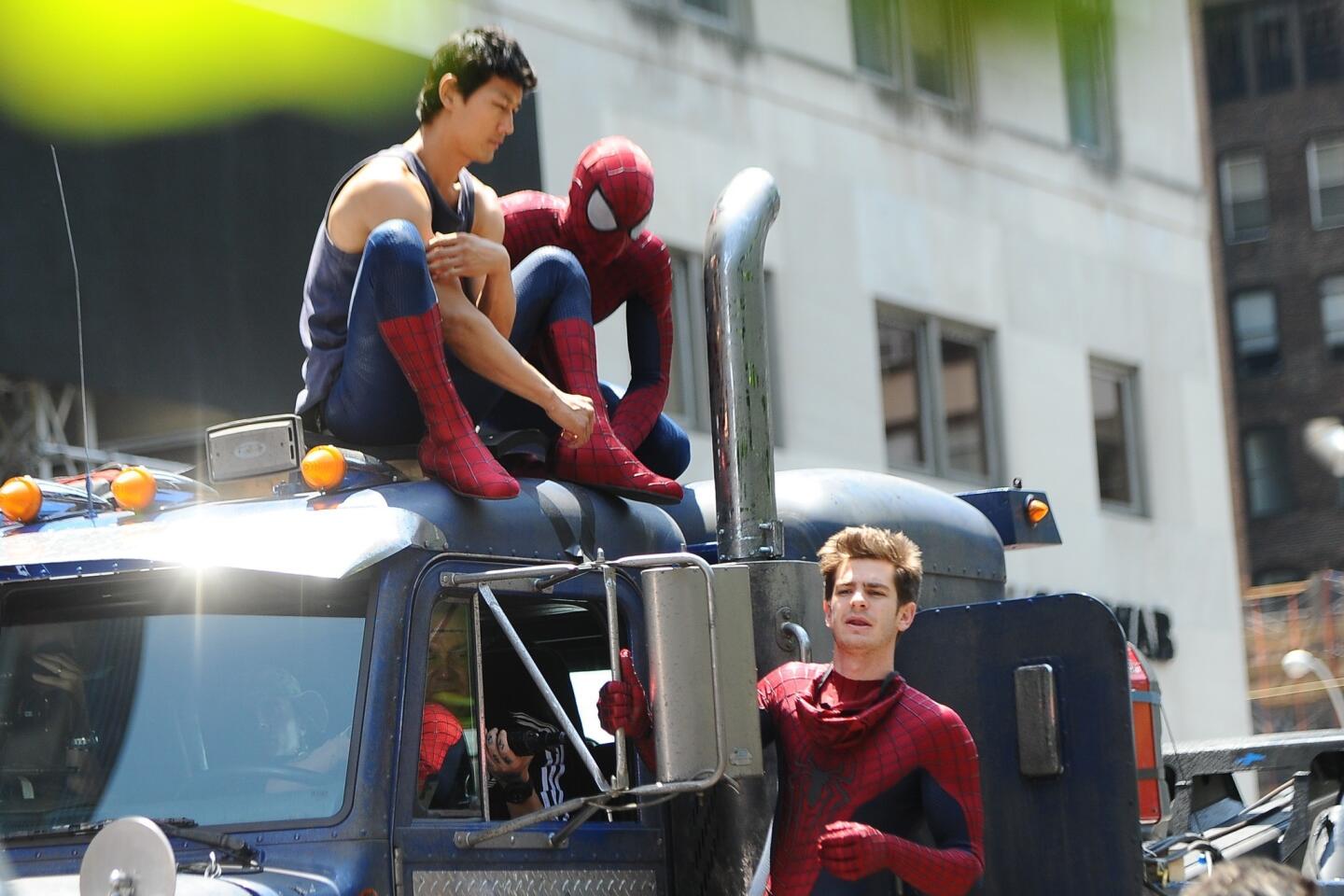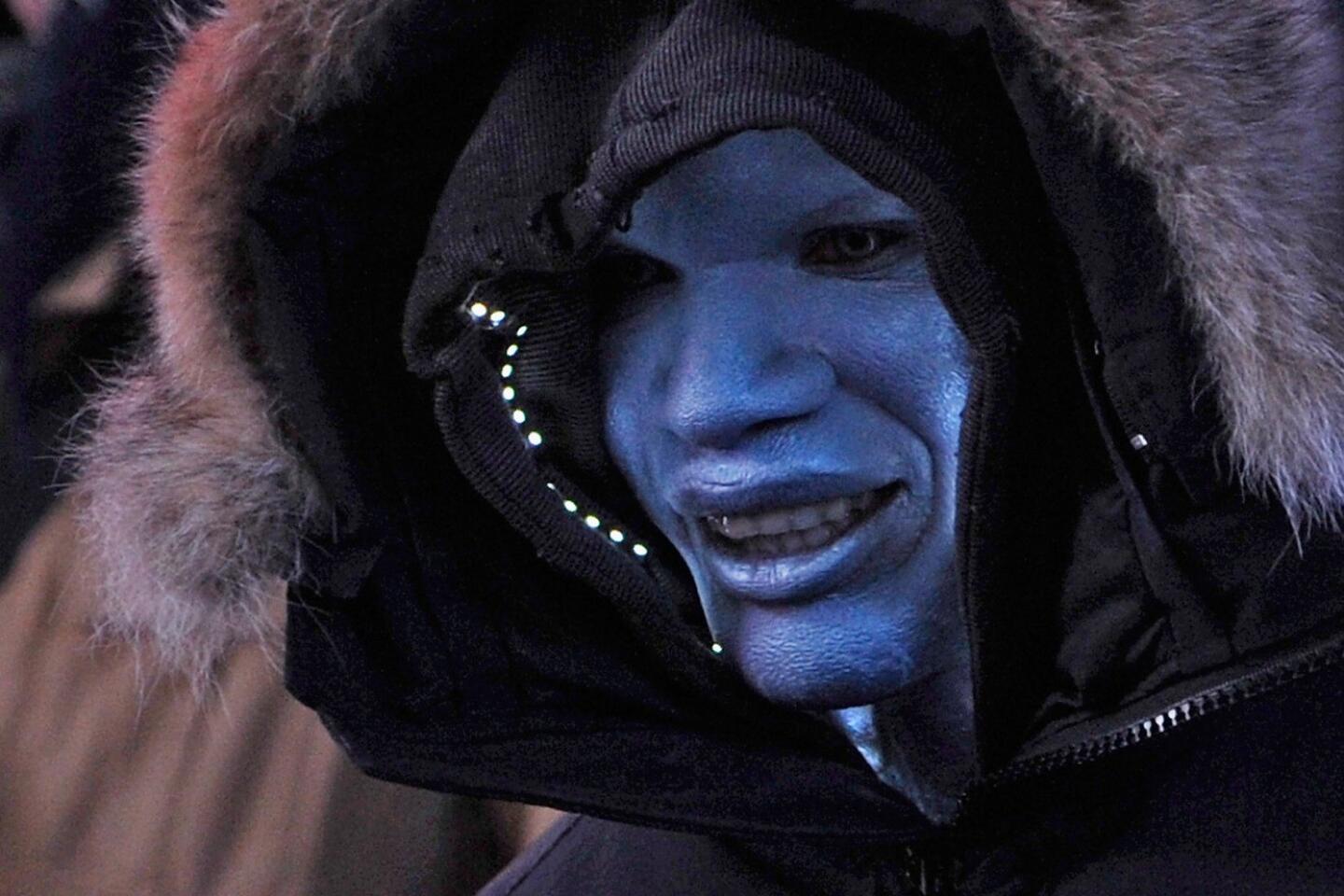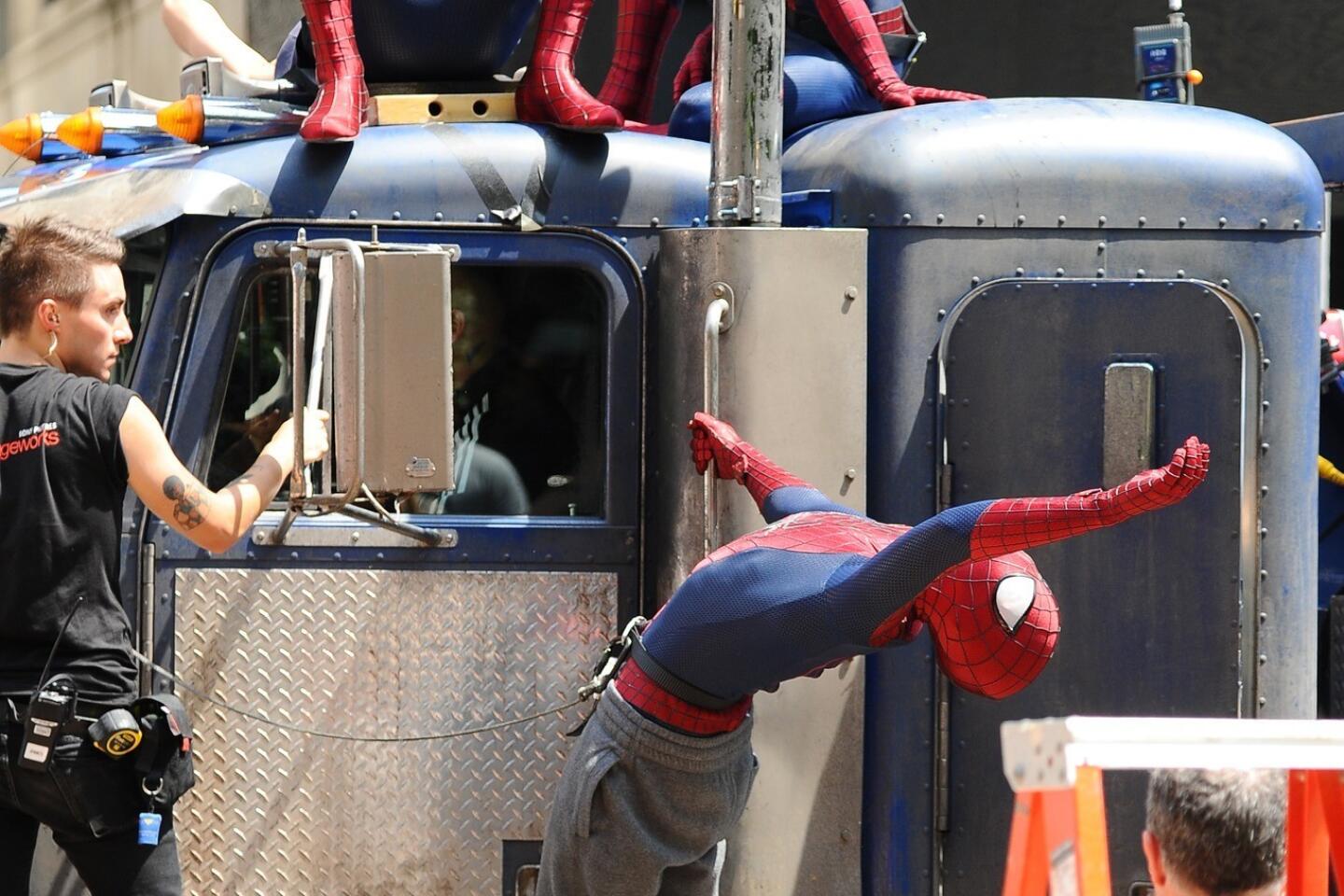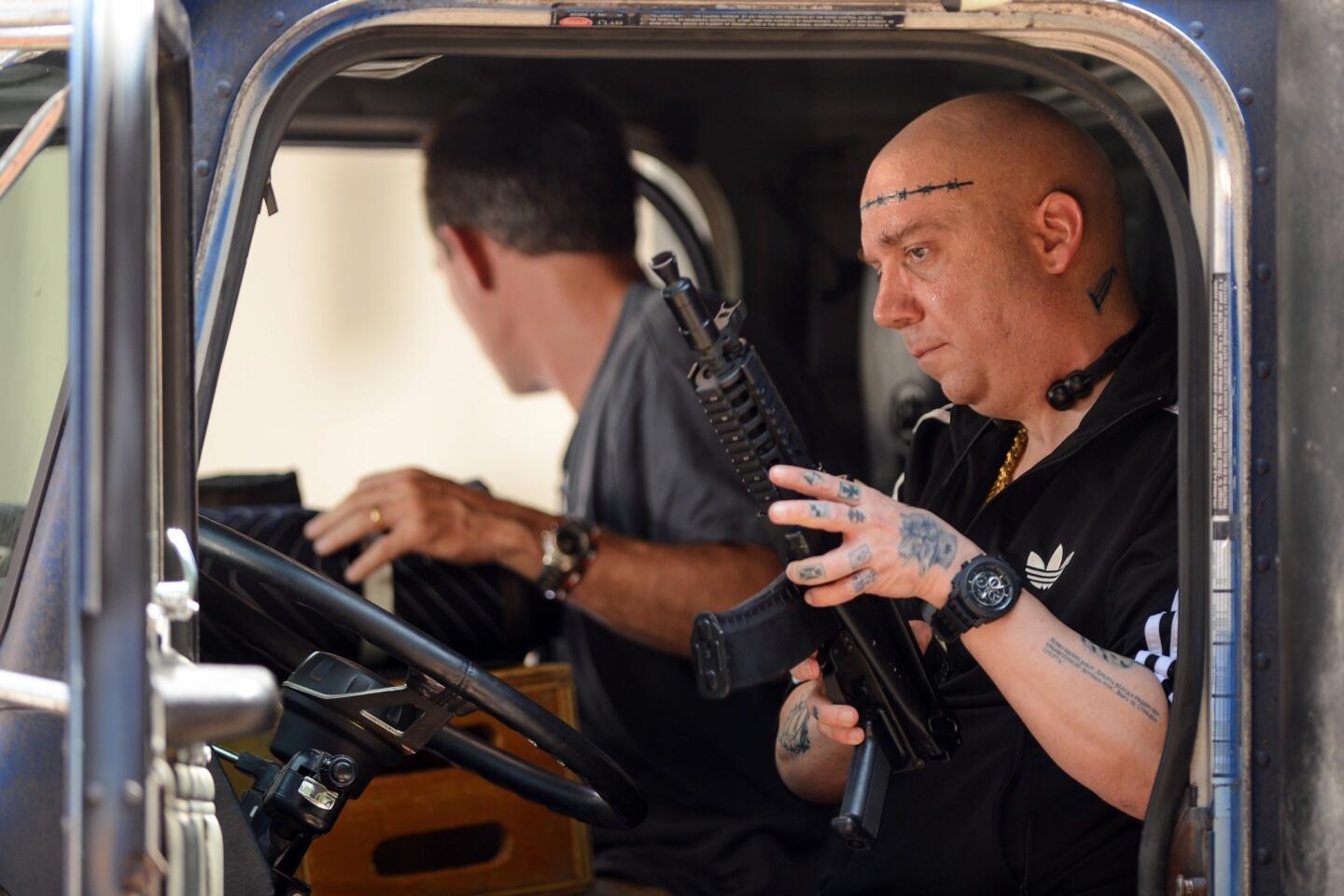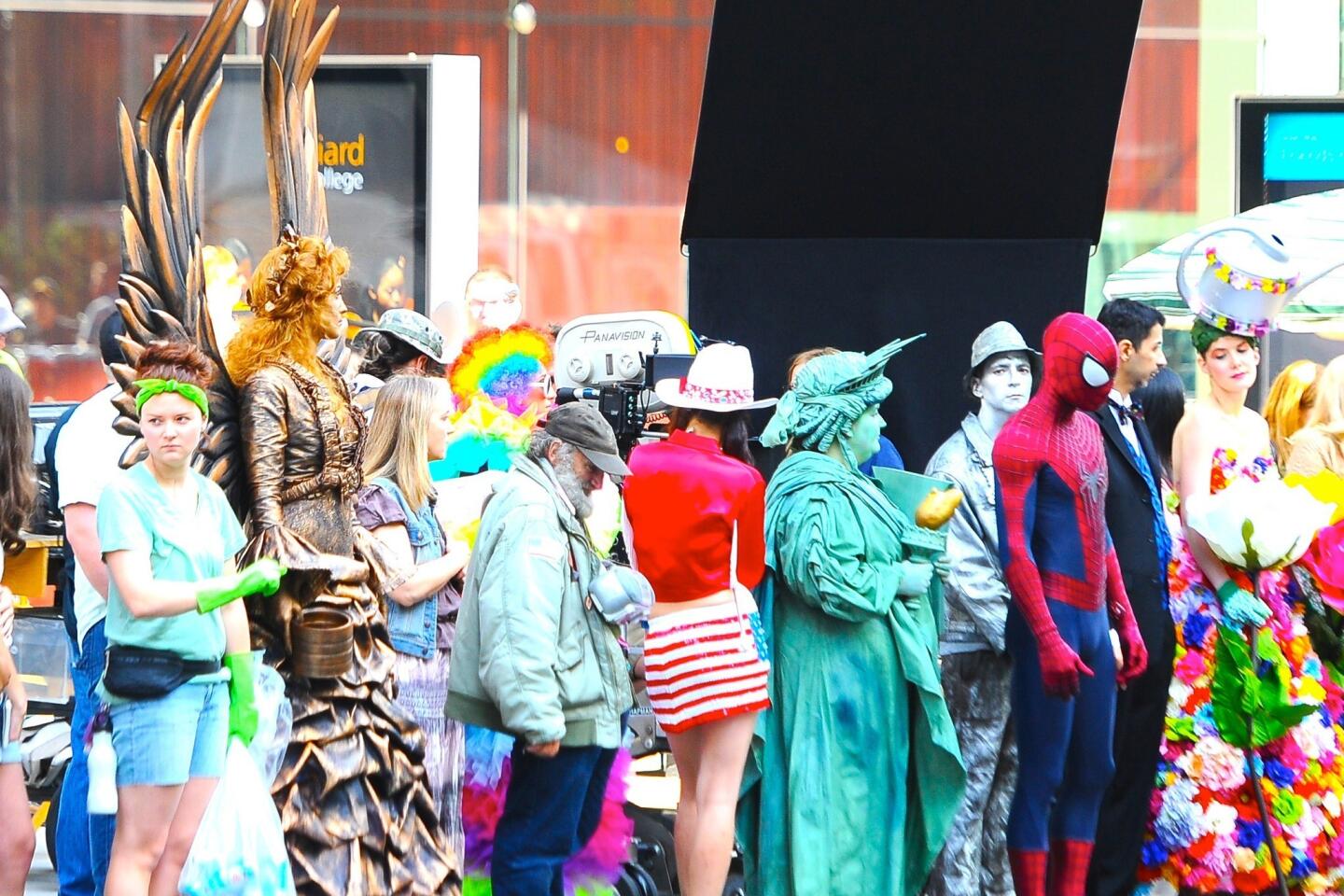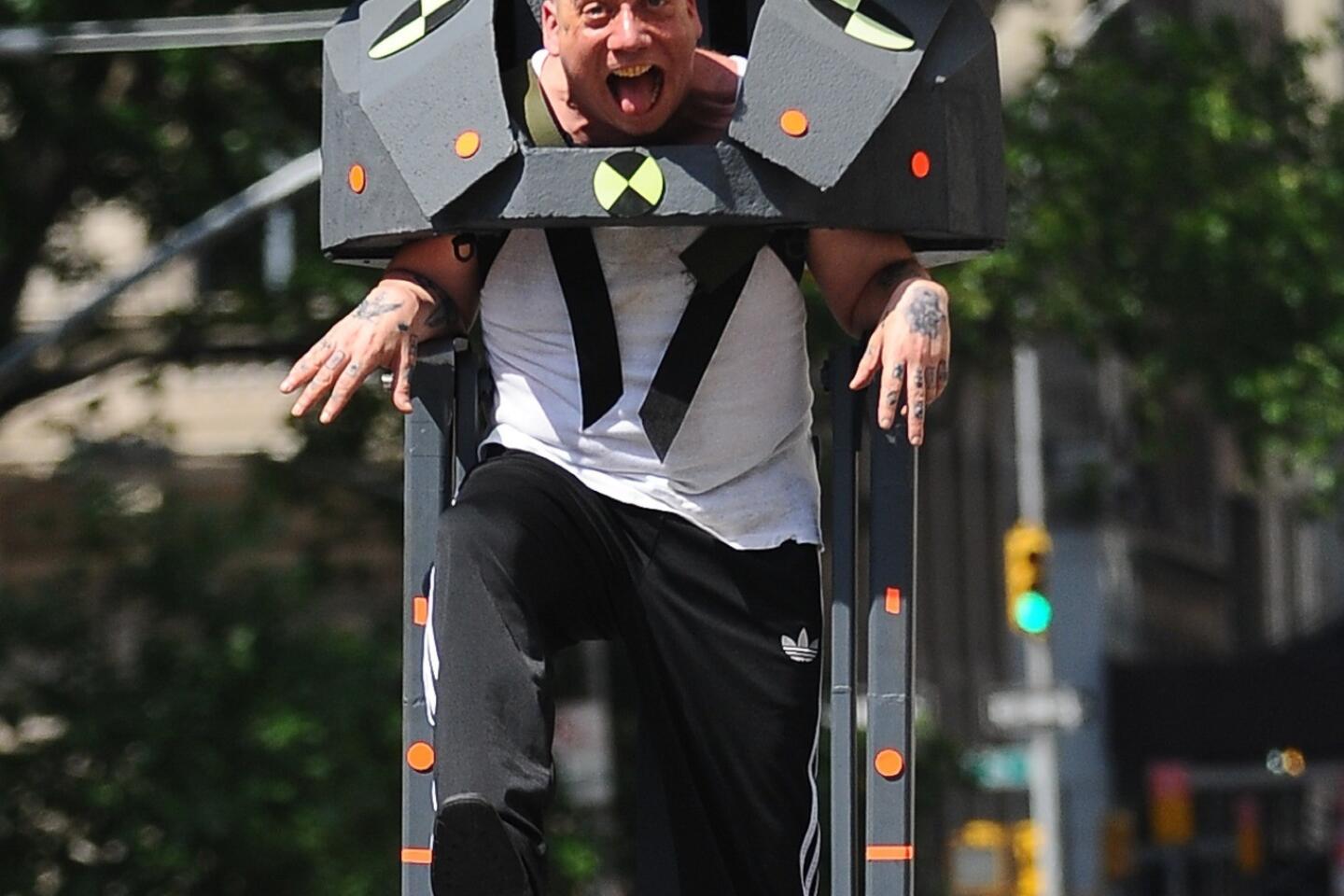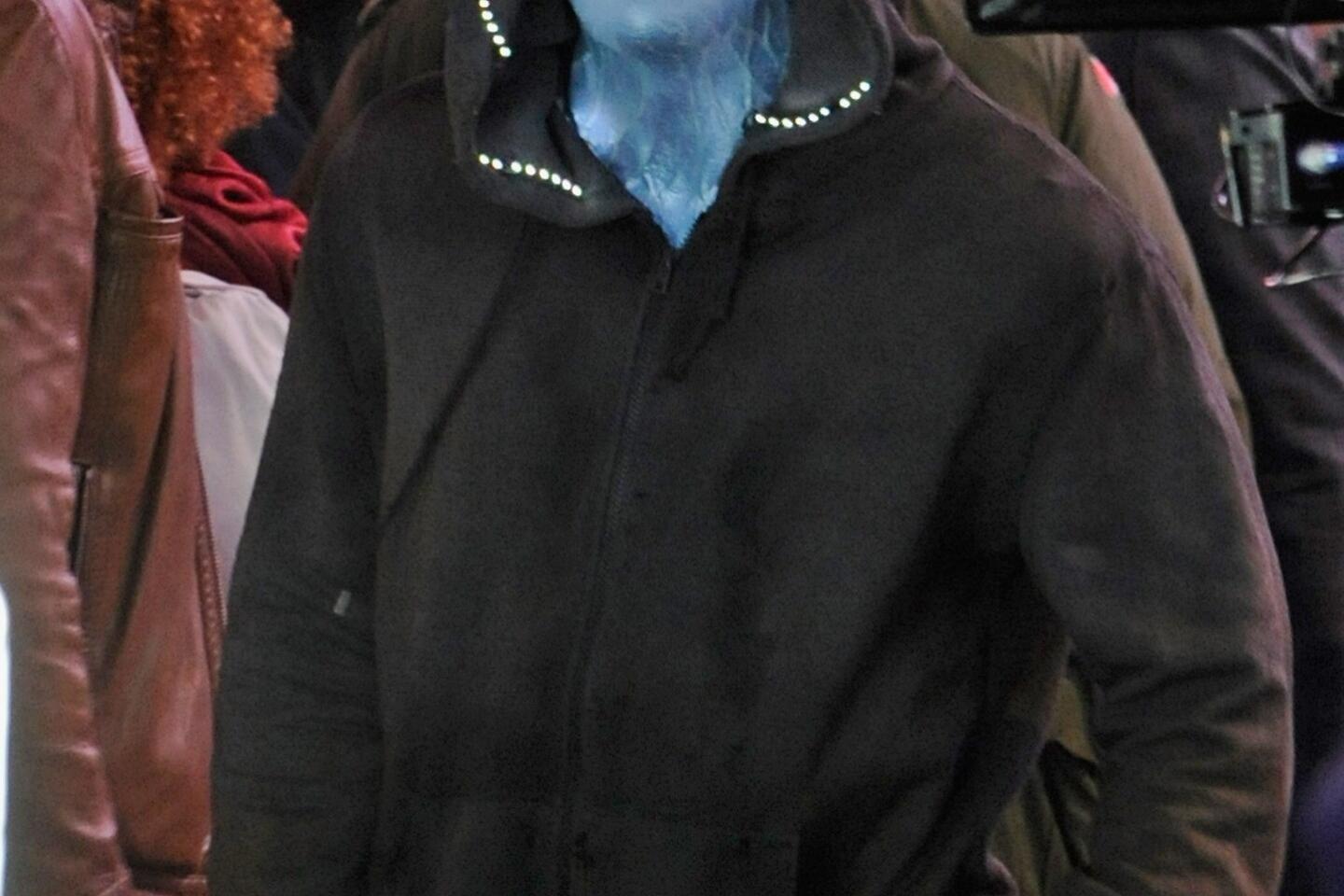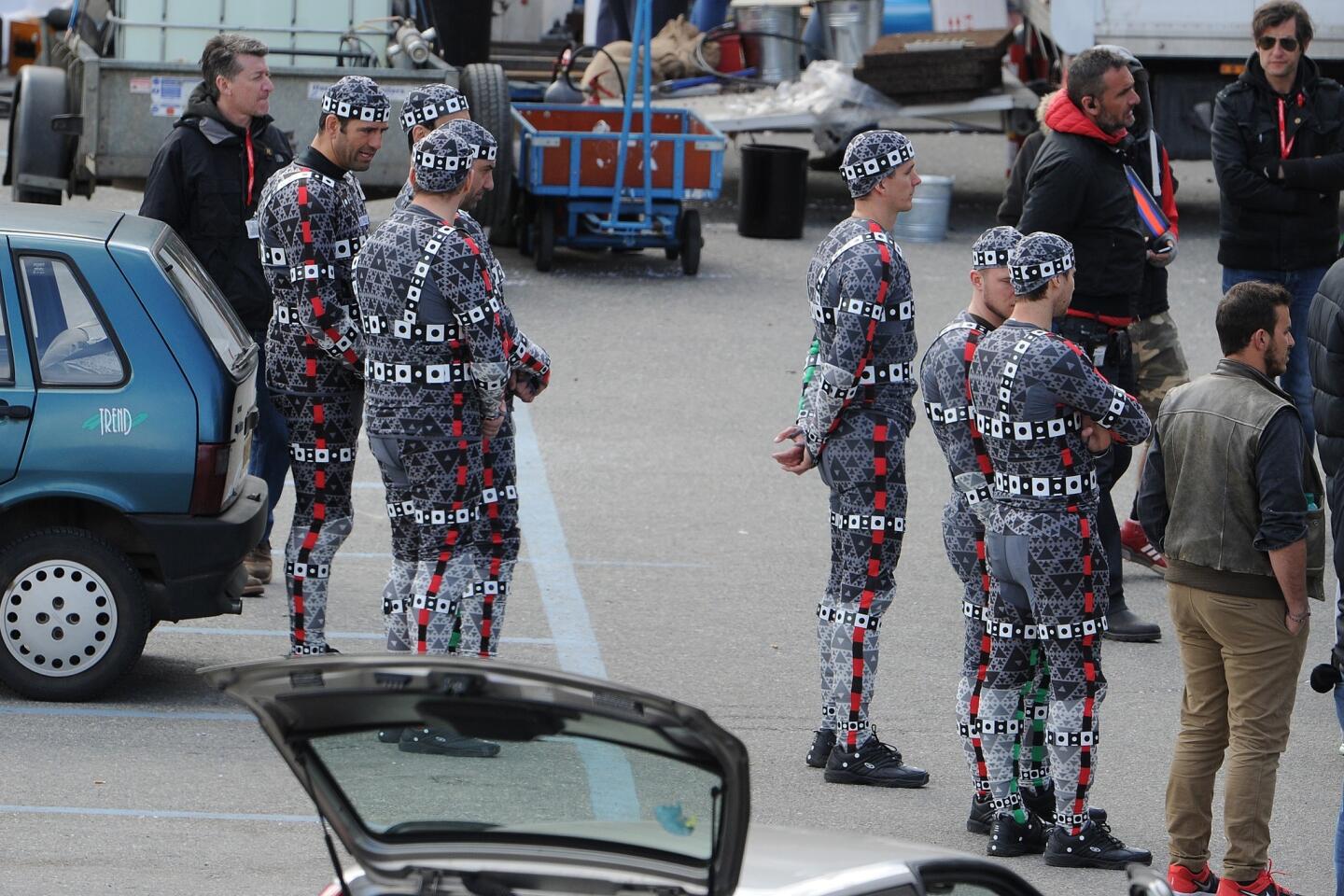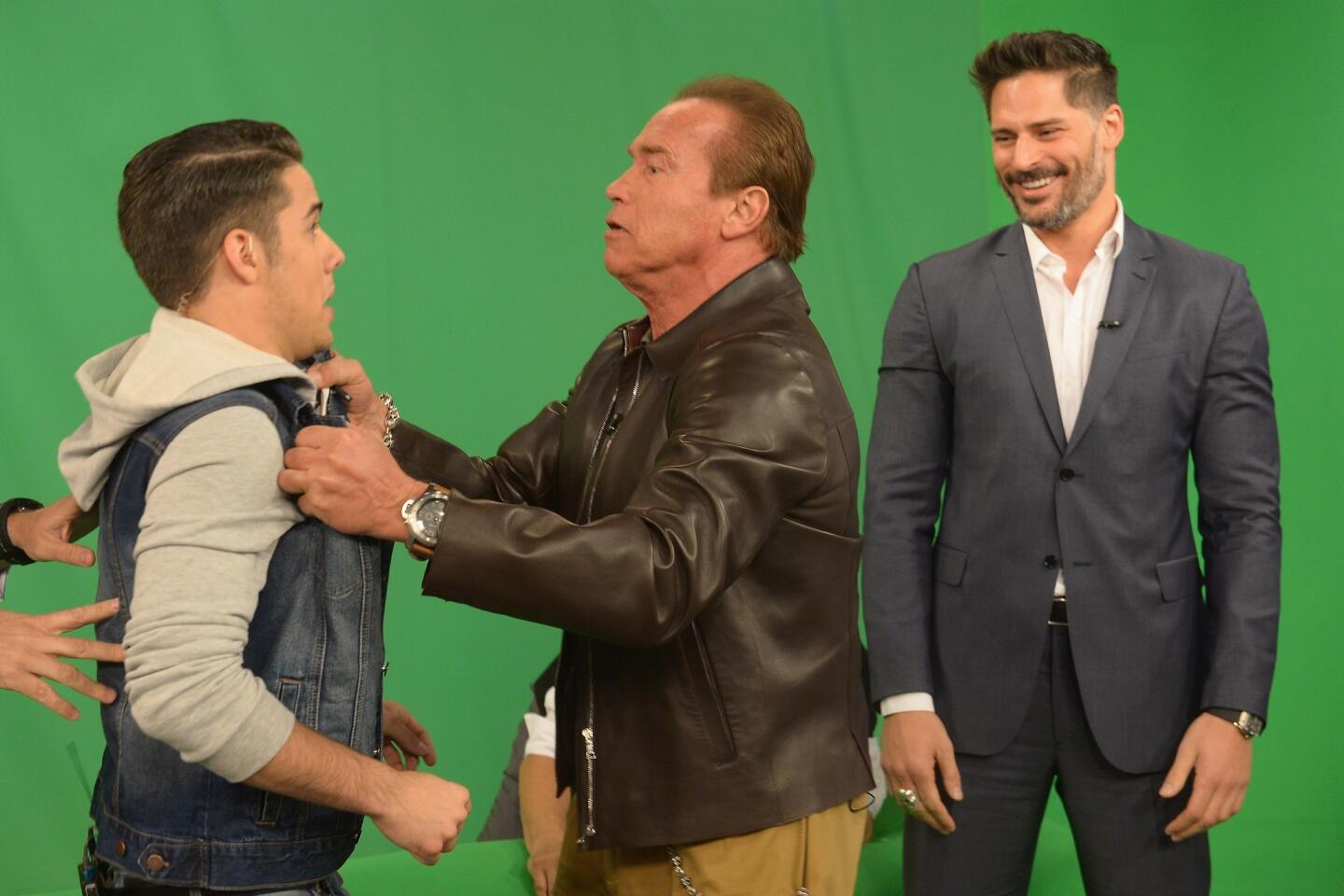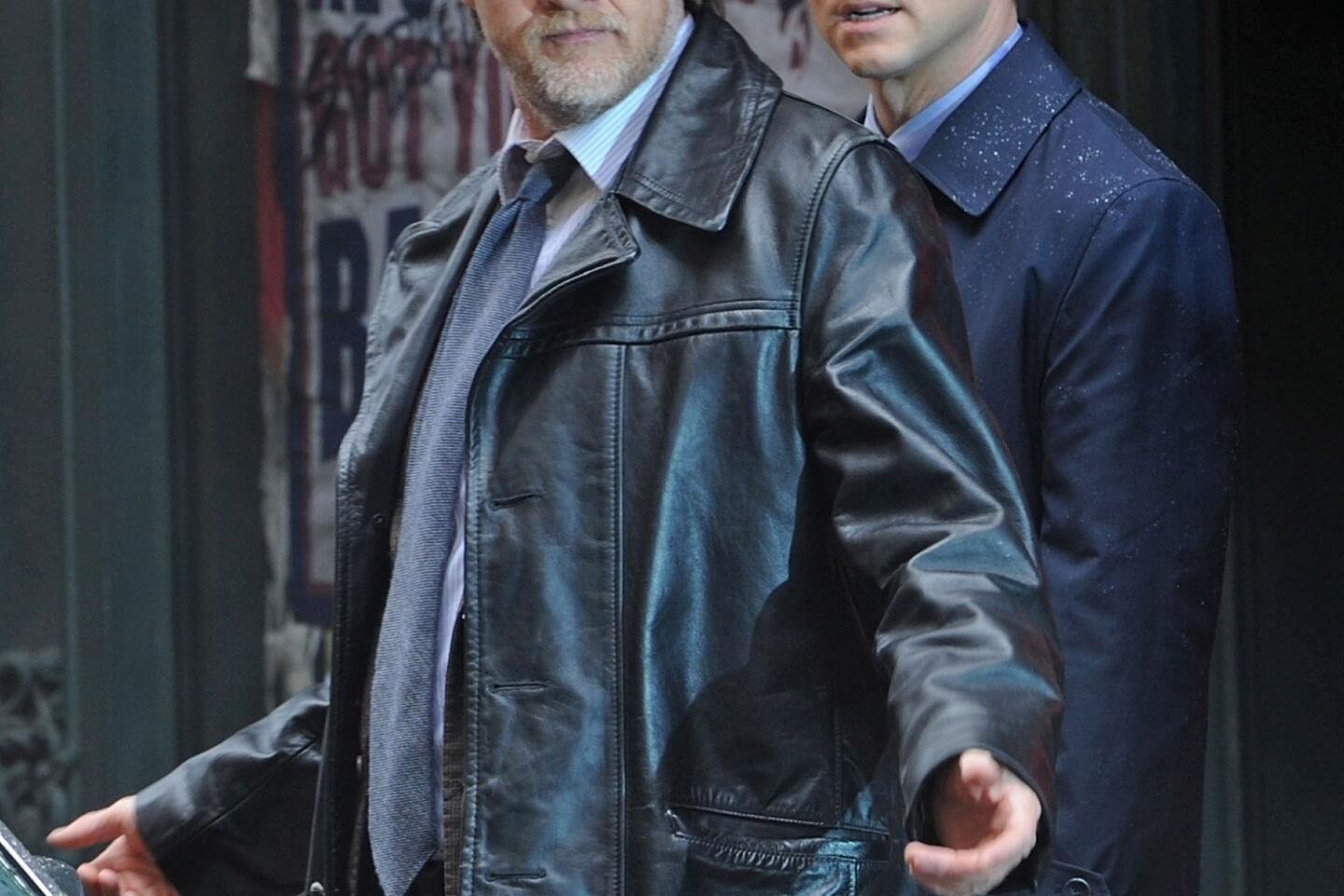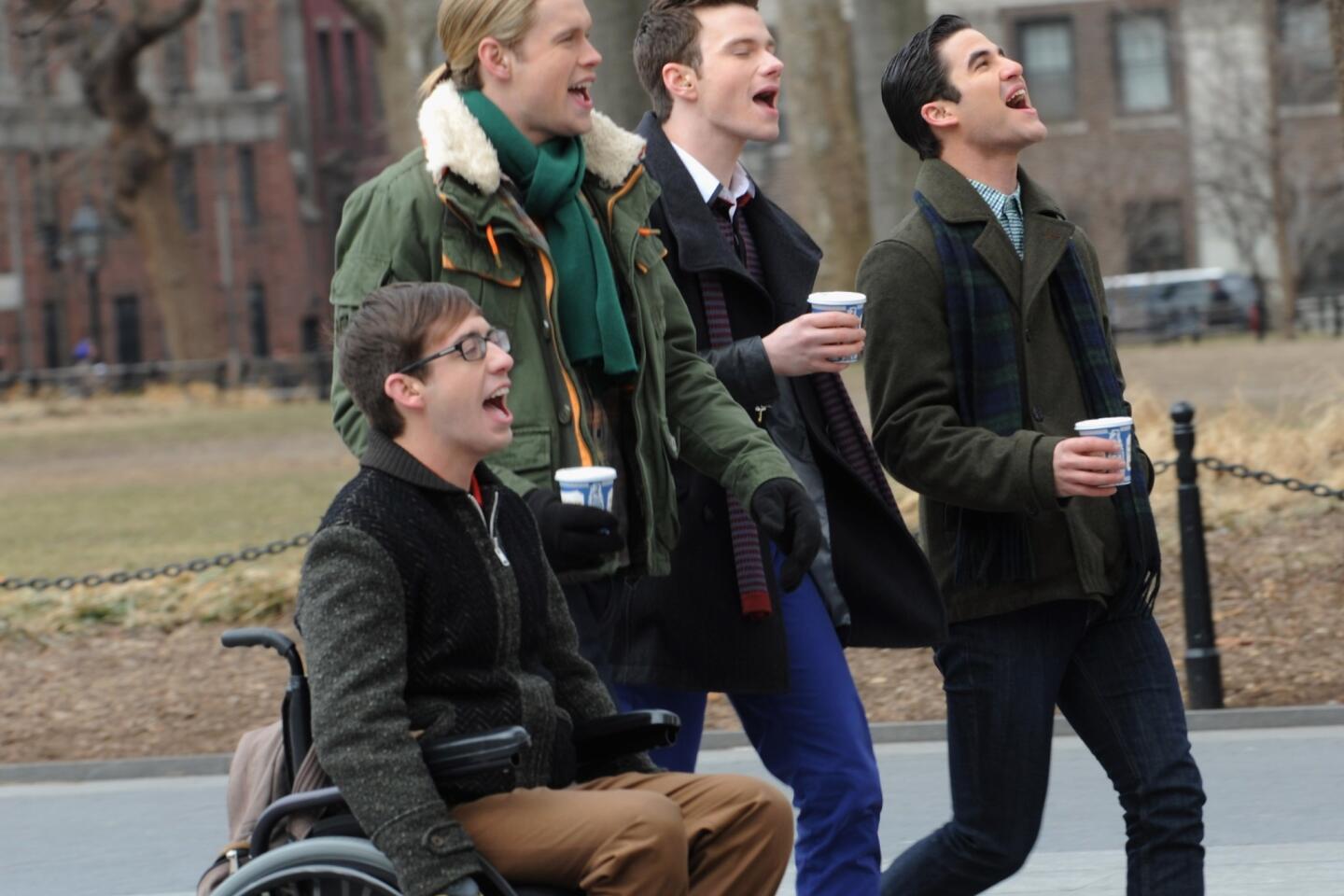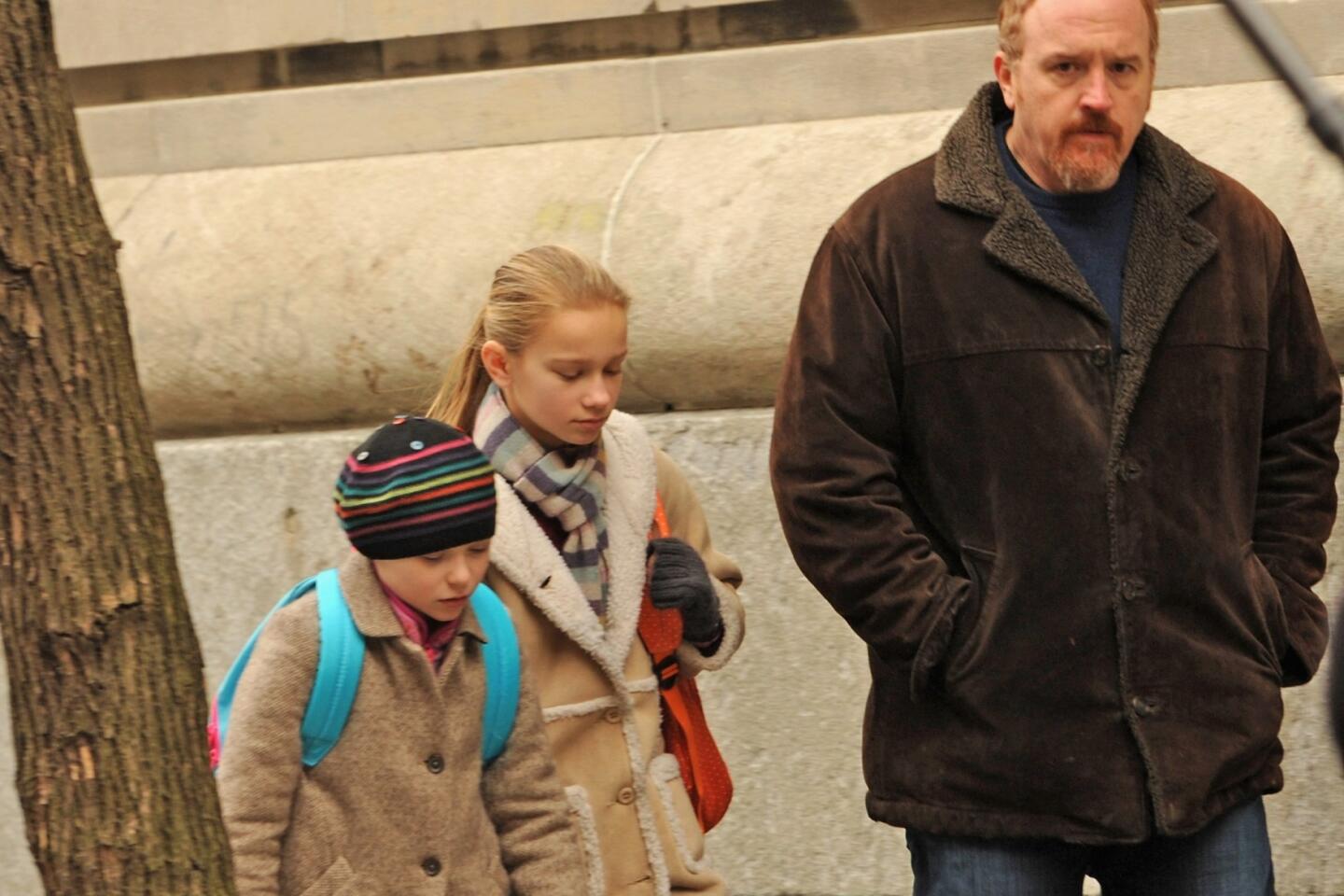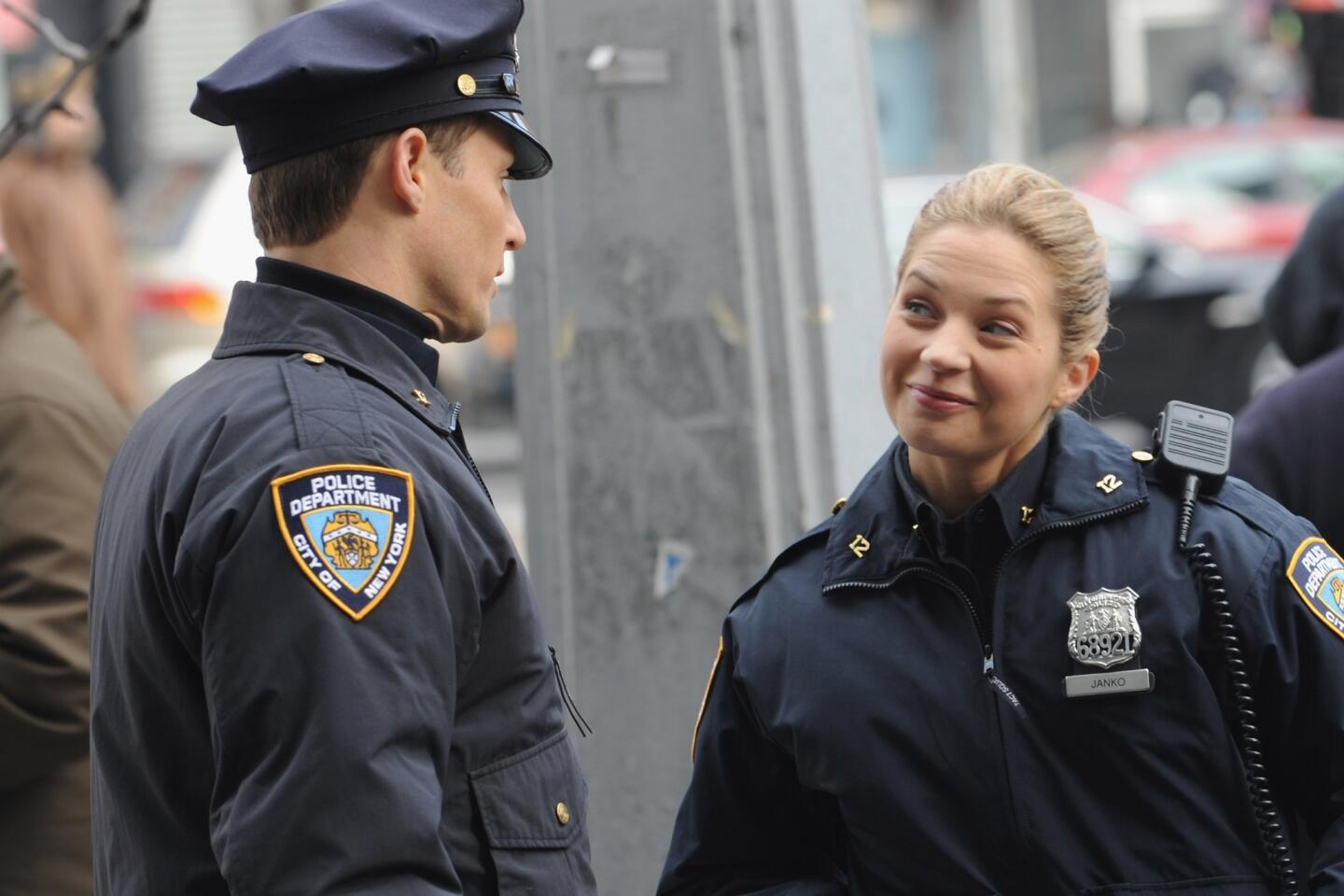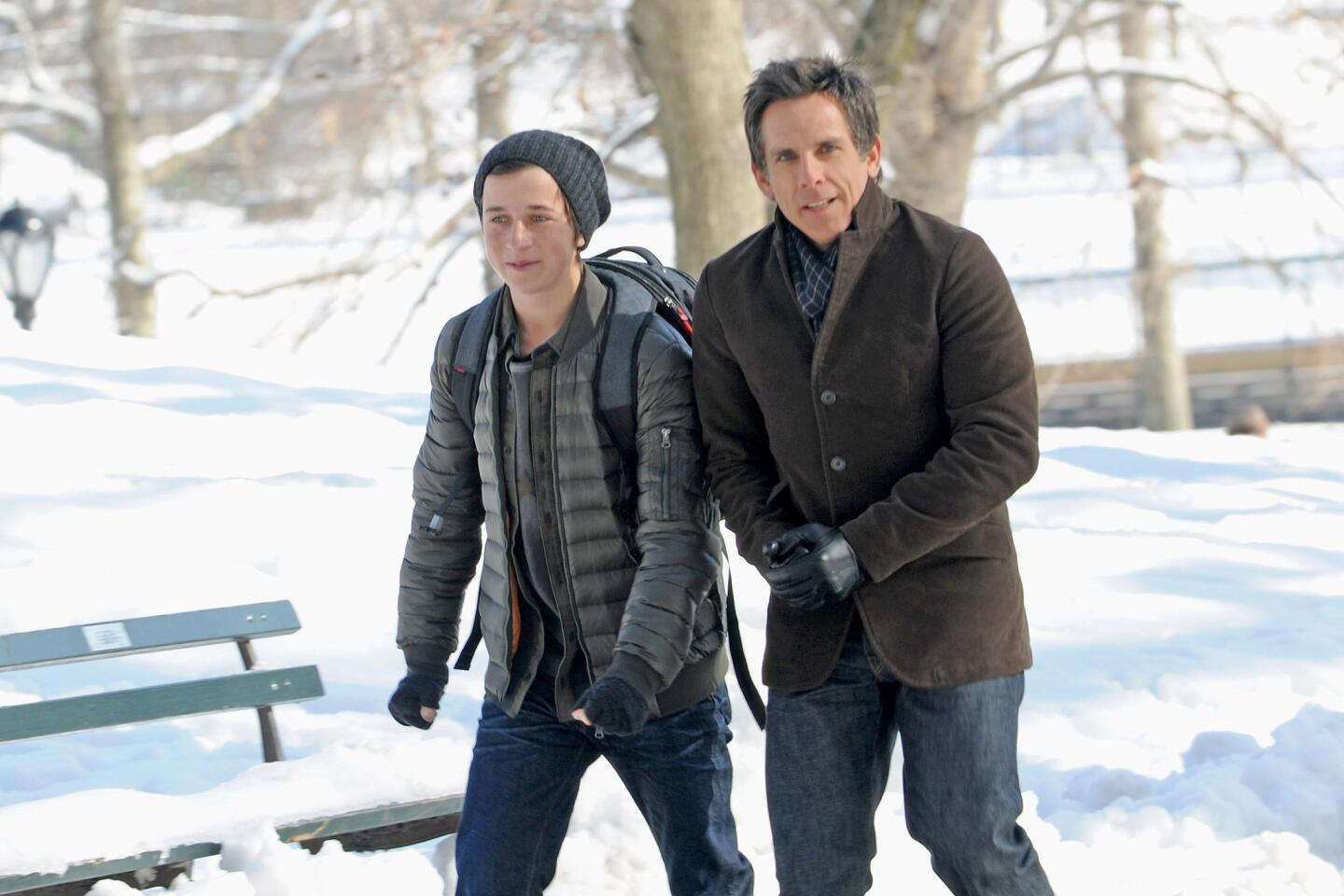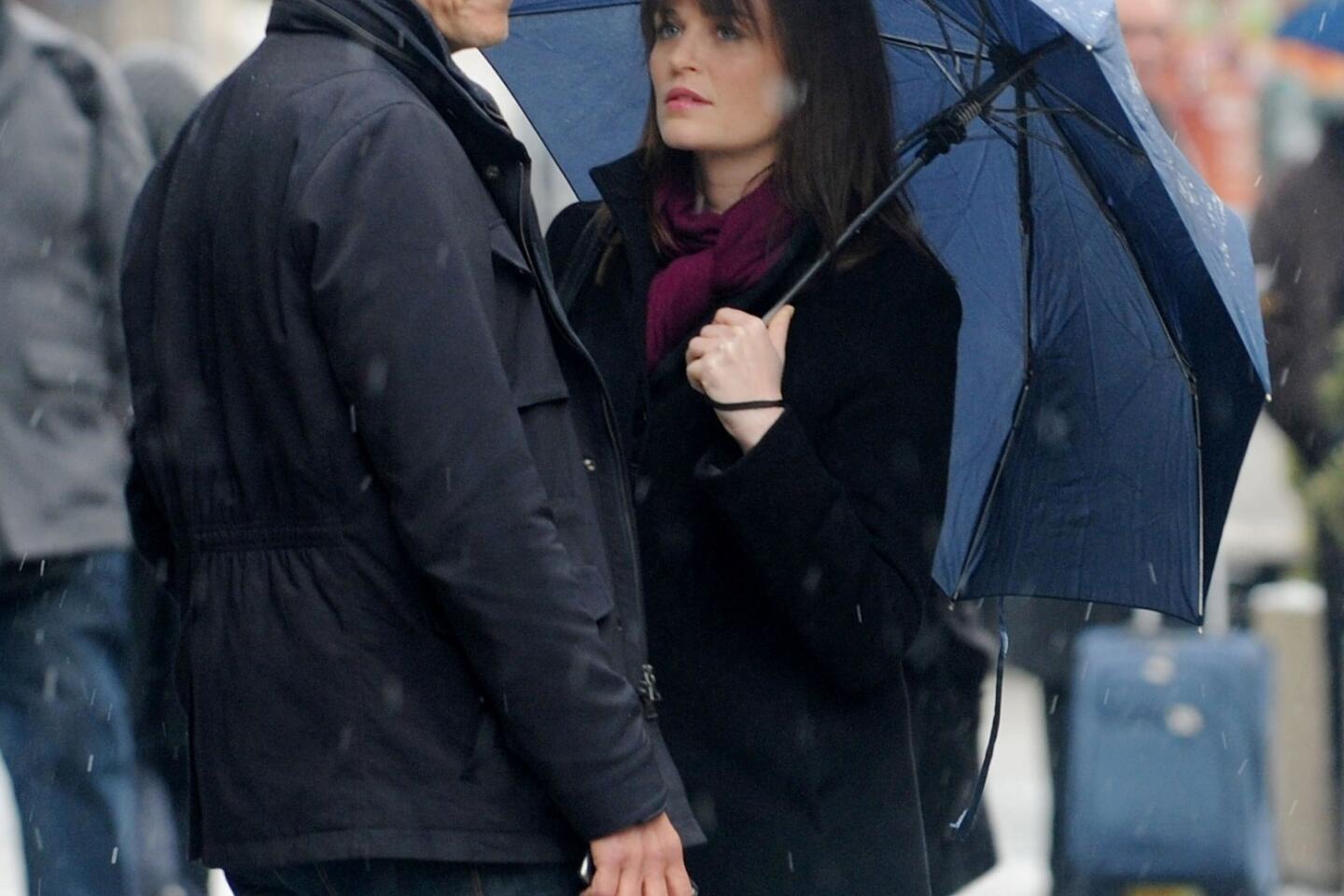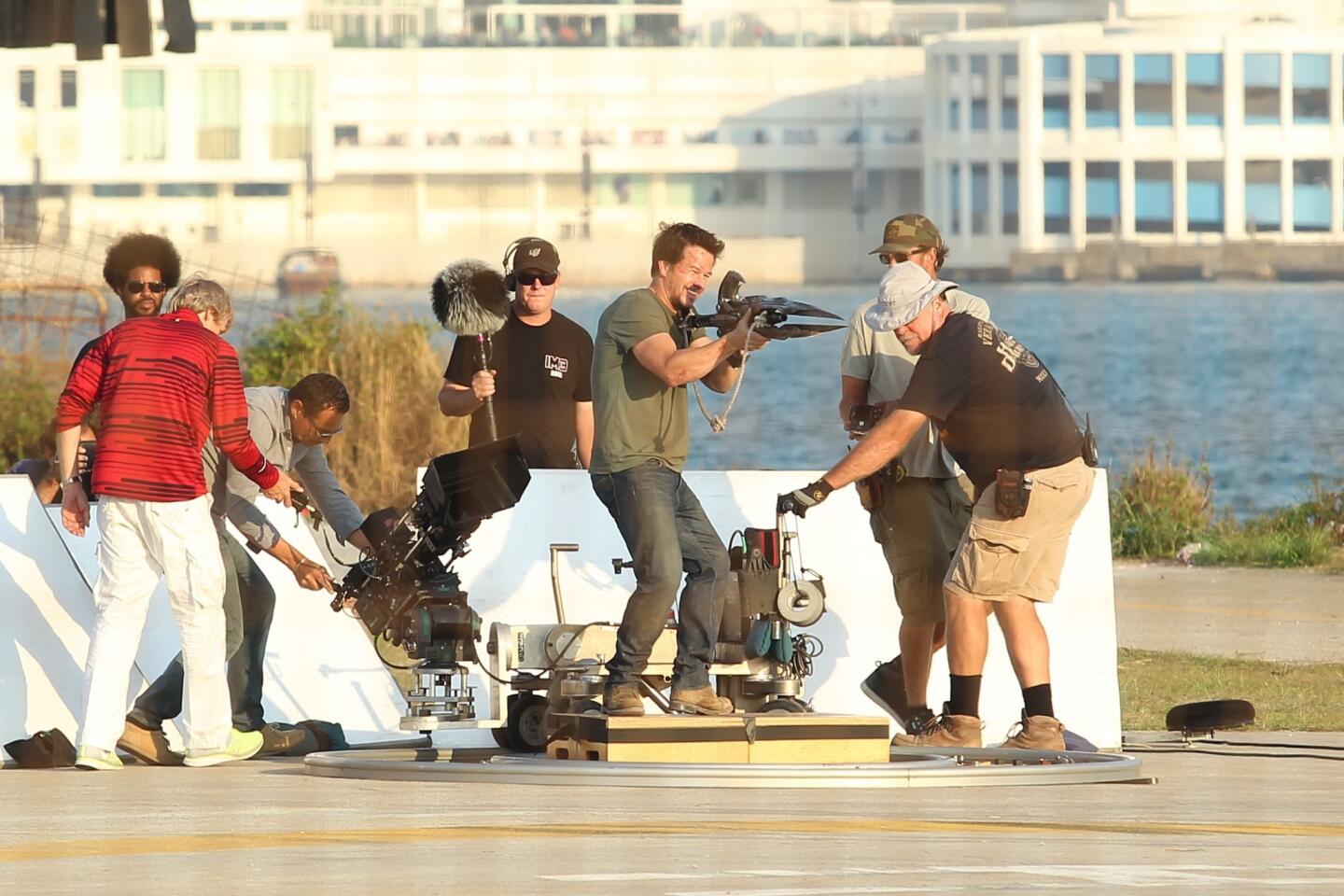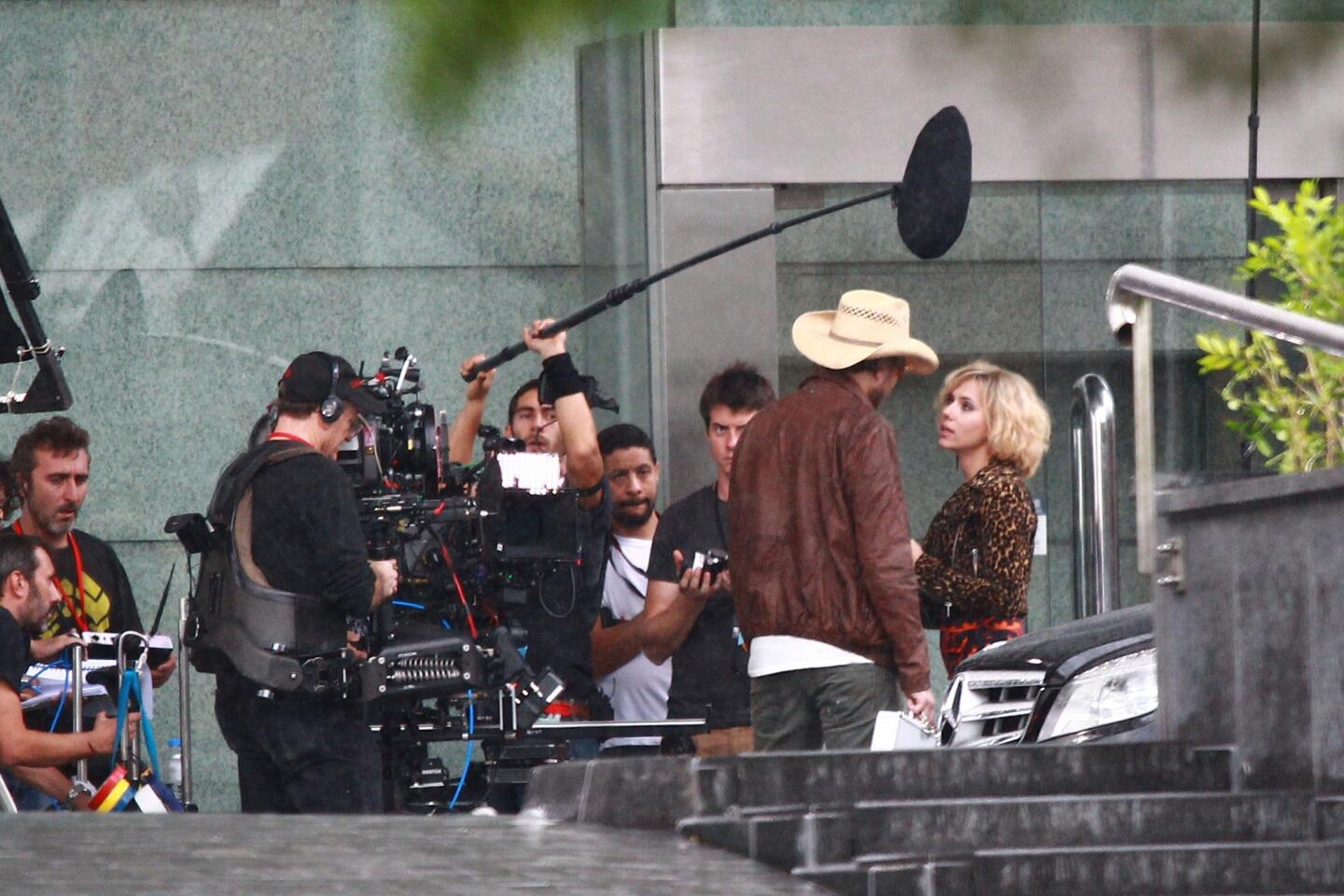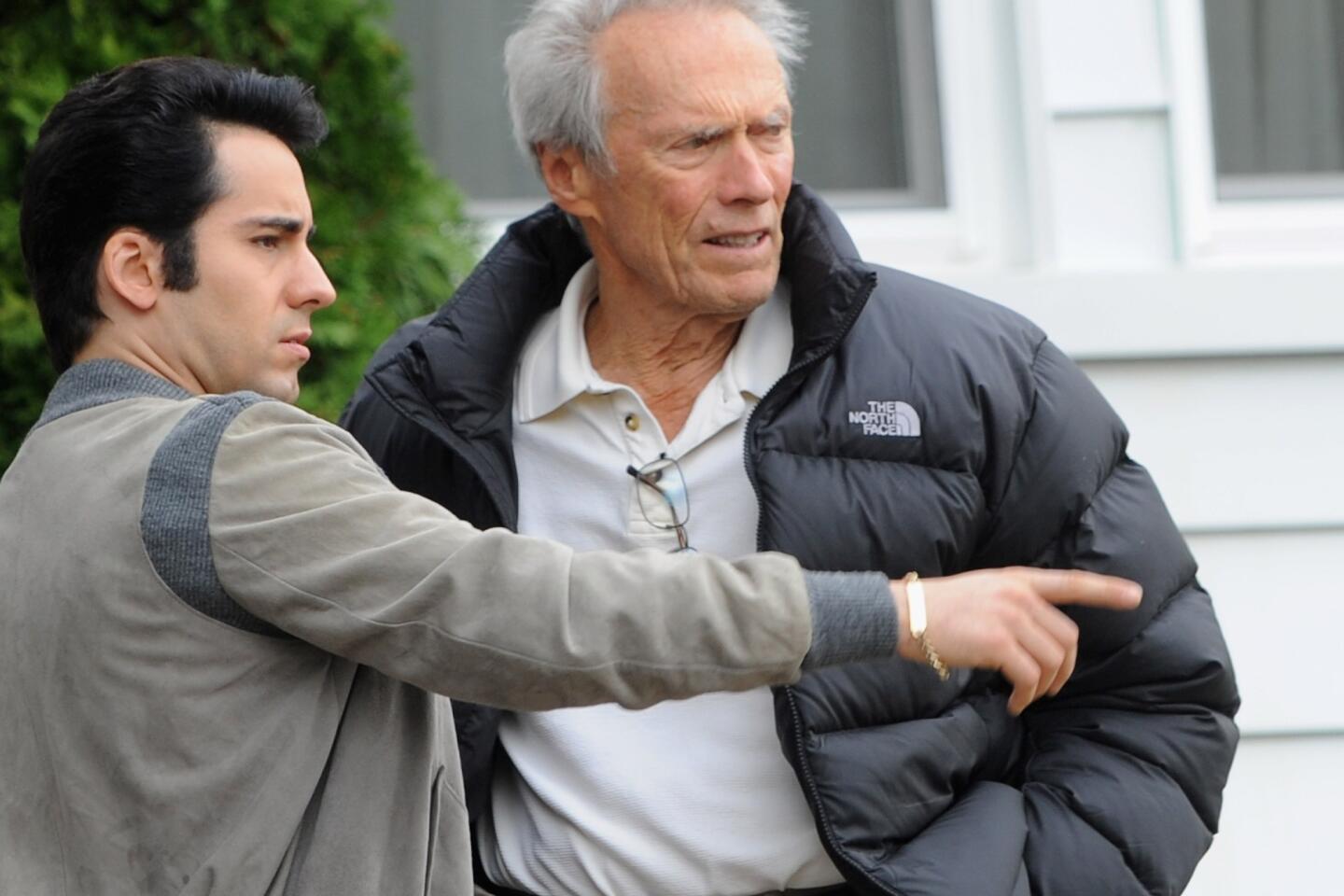Review: ‘League of Denial’ tackles NFL’s concussion issue head-on
- Share via
Football is a violent game, even its fans must admit, and might celebrate.
There are parts of it that aren’t violent, of course — the throwing and catching and running. But they are accompanied, and made possible, by the smashing and hitting and crunching and tackling the stewards and presenters of the game make central to the presentation.
Players get hurt, obviously, but not always in immediately obvious ways. “League of Denial: The NFL’s Concussion Crisis,” which premieres Tuesday on the PBS investigative series “Frontline,” looks at the correlation between football and brain trauma. Specifically, the documentary examines the appearance of chronic traumatic encephalopathy — what used to be called dementia pugilistica, for the boxers who suffered from it — and the NFL’s campaign to deny or downplay the link and discredit the experts who detected it.
FALL TV 2013: Watch the trailers
It is a “When did they know and how long did they manage not to believe or mention it?” story, and, of course, it is about money.
Its airing has been timed to the release of a similarly titled book by Steve Fainaru and Mark Fainaru-Wada, ESPN reporters whose research and talking heads also drive the film. Originally a producing partner, ESPN removed its credit and brand from the film, citing lack of editorial control; some speculate that the network’s $2-billion contract with the NFL might have been a factor, though ESPN has been reporting the book’s revelations as news.
Director Michael Kirk (a “Frontline” co-creator) begins in Pittsburgh, home of the Steelers, a brawny team, it is suggested, for a brawny town. (Cue: images of steel mills.) It was a former Steeler, Mike Webster, who died in 2002, at age 50, after years of cognitive degeneration, who was the first former player to be found to have CTE. (Accurate diagnosis is possible only postmortem, and part of the story here is the drive to acquire the relevant brains.)
He was not alone; reports of players suffering from depression or dementia, of sudden violent behavior and even suicide (including Steeler Terry Long, who drank anti-freeze, and San Diego Charger Junior Seau, who shot himself in the chest) arrive with depressing regularity. And nearly all the dozens of brains autopsied since Webster’s, at least by the doctors who speak here, have shown signs of CTE at an age when such changes are unusual.
FULL COVERAGE: Fall TV preview 2013
The NFL countered by creating its own investigative committees, staffed by NFL loyalists, including team doctors; its first lead doctor had no expertise in neurology at all. Vested interests tended to crowd out impartial science.
In 2007, when there was cause at least for caution, the league published a pamphlet for its players, “What Is a Concussion” that claimed that “current research” showed no permanent damage or cumulative effect from concussions, and that it was fine to continue to play after one.
Still, in the face of growing evidence for football-sustained long-term brain trauma, the official response evolved from blanket denial and demonization to a sort of concerned “no comment” that refers the questioner to the medical professionals and seeks to portray the league brass as committed to learning more. (Protectors of the status quo always need to know more.)
There have been conspicuous donations to related research, interpreted by some as public relations, but also changes in the way concussions are handled within a game. A youth football safety initiative was established.
PHOTOS: Hollywood Backlot moments
Because no one currently associated with the NFL or any of its former defenders agreed to cooperate with this report, the opposing side is represented mainly through news clips, anecdotes and its own, sometimes self-incriminating, documents. There are a few doctors on hand, as well, to say that more research needs to be done, which is inarguable; that independent researchers have agendas too; that the sample is skewed toward players who were obviously in distress, perhaps with other confusing, contributing factors; that is too soon to be definitive.
On the other hand, there is the mute testimony of the $765 million the league paid, without admitting liability or wrongdoing, to settle a lawsuit filed by more than 4,500 former players, which charged that the NFL’s Mild Traumatic Brain Injury Committee was essentially a tool to help propagate a lie to mislead players and fans.
Television is indicted too, specifically “Monday Night Football,” which, from its premiere in 1970 increased the popularity of the sport and the money it generated. Emphasizing the game’s gladiatorial, human-demolition-derby side, the broadcasts helped change the way the game is played.
PHOTOS: Celebrities by The Times
We get a lot of slow-motion footage of butting heads, some of it from the NFL’s own home videos, with titles like “Big Blocks and King Size Hits,” “Crash Course” and “Moment of Impact”: “The meek will never inherit this turf,” a narrator intones.
There is also evidence that high school players are at risk, as well — special risk, given that the young, lighter brain moves more easily in the skull. Dr. Robert Cantu, a leader in the study of CTE, suggests “no one under 14 should play tackle football.”
“I think the NFL has given everybody 765 million reasons why you don’t want to play football,” says former New York Giant Harry Carson, a Hall of Fame linebacker. For many, that still won’t be enough.
---------------------------
‘Frontline: League of Denial’
Where: KOCE
When: 9 p.m. Tuesday
Rating: TV-PG (may be unsuitable for young children)
More to Read
The complete guide to home viewing
Get Screen Gab for everything about the TV shows and streaming movies everyone’s talking about.
You may occasionally receive promotional content from the Los Angeles Times.
